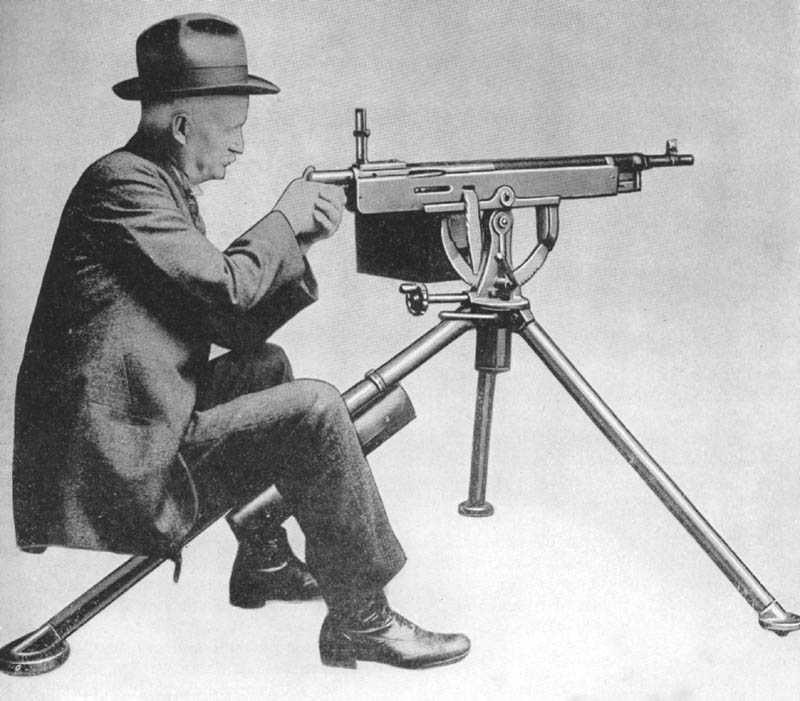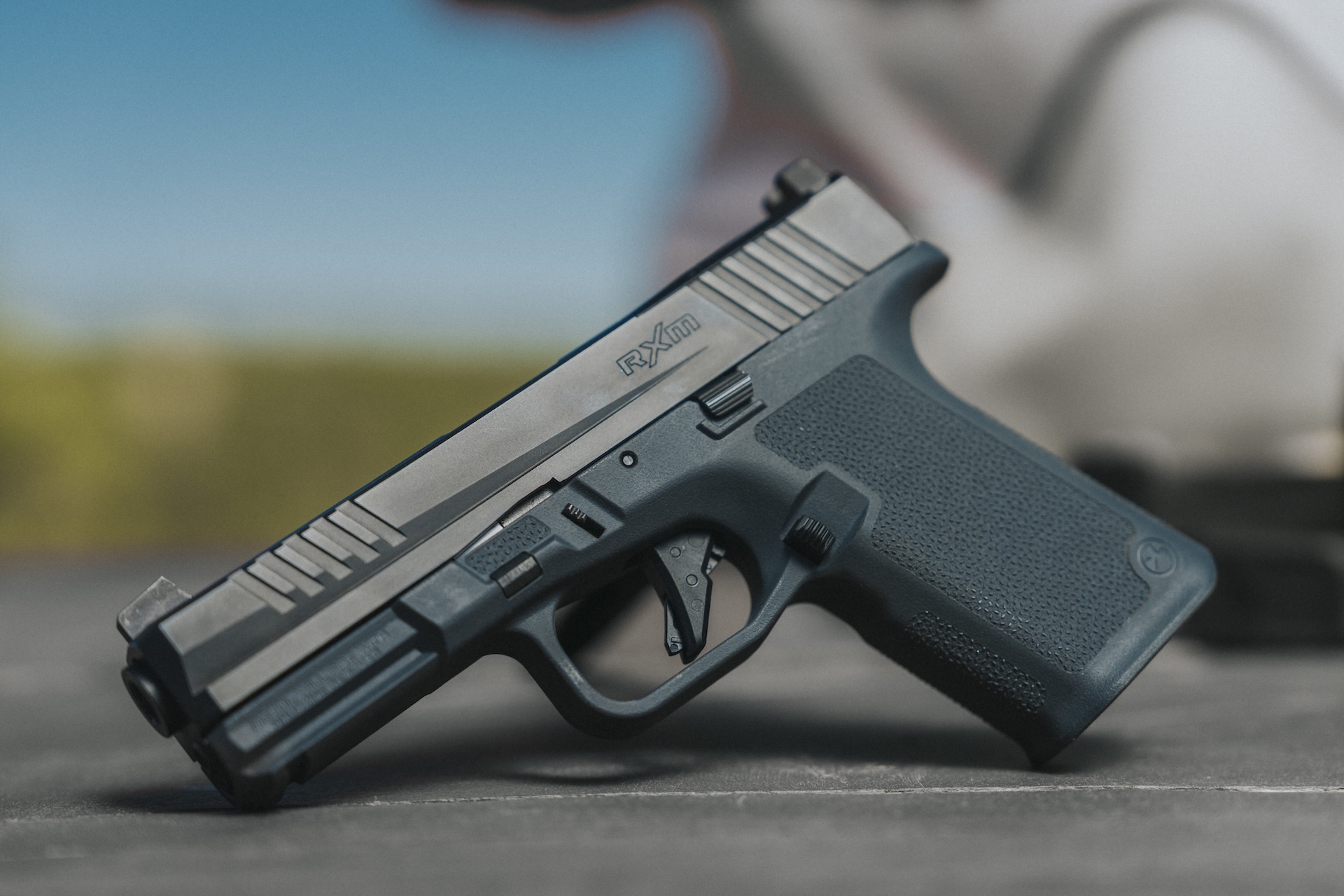There were actually many gun inventors/designers of the past.
However, only some stood out because of their forward thinking, which propelled them to the top to be remembered in our firearms history.
These inventors didn’t just think of creating something that went kaboom, even though that was the fun part.
They usually created a firearm to make it better than an existing one.
Obviously, when it came to war firearms was used as a better way to fight for territory.
Firearms quickly replaced all other weapons of war once the idea became reality.
Looking at the progression of bettering the firearms functionality, we can see breech-loading rifles later giving way to automatic weapons for military use.
Each massive step in the process involved individuals who set their minds to solving the problem of their time. Without further adieu, here are some of the top gun inventors from the past that has made an impact in the gun industry.
- Dr. Richard Jordan Gatling

The designer of the first successful machine gun, although not the first automatic machine gun. It was, in effect, a gigantic revolver of six barrels operated by a hand crank. A bin of several hundred loose rounds (not belt-fed) was set on top and gravity fed the ammunition into the breech, enabling someone who knew nothing of firearms to lay a sheet of lead into an advancing army, at about 200 rounds a minute. To the Civil War soldiers accustomed to muzzle-loading single rounds at a time, this might well have been like seeing something out of Star Wars.It had its drawbacks, though, primarily that so much black powder churned up into a huge cloud around the weapon, and all the enemy artillery and snipers honed it on it. - Samuel Colt

Samuel Colt was the original designer of the repeating revolver. He founded Colt’s Patent Fire-Arms Manufacturing Company and was the maker of the Paterson Revolver (made famous by the Texas Rangers).
His use of interchangeable parts helped him become one of the first to use the assembly line efficiently. Moreover, his innovative use of art, celebrity endorsements, and corporate gifts to promote his wares made him a pioneer in the fields of advertising, product placement, and mass marketing.
He also is reputed to have sold weapons to both the North and the South during the American Civil War.
His influence can be carried on to this day in single action six guns, and he’s known as the grandfather of the modern revolver. - David Marshall Williams

Carbine” Williams went to prison in 1921 for selling moonshine, when the raid on his still resulted in an officer’s death. Williams swore that he was not guilty, and his trial resulted in a hung jury. However, he then confessed to 2nd degree murder, having fired at a sound without knowing if it was a man or an animal.He was sentenced to 20 to 30 years, but was pardoned after 8 years because, in the prison machine shop, he invented two brilliant principles for the military’s firearms. Most importantly, he invented the short-stroke piston for use in gas-operated small arms. His patented design has not been improved on since 1940, when he perfected it, and it was first used in the M1 Carbine. The U. S. military had been searching for a lighter alternative of the M1 Garand, but still with long-range capability and stopping power.Williams’s short-stroke gas piston was the key. He also invented the floating chamber, which greatly reduces recoil, and enabled the military to train its machine gunners with less expensive .22LR ammunition. - John Taliaferro Thompson

Thompson saw in the trench warfare of WWI that infantry needed a “trench broom,” a weapon that could sweep away all the enemy in front of the soldier, in the same way as the pump shotgun, but with even more firepower. He used John Blish’s delayed blowback breech lock, which enabled the different metals of the weapon’s moving parts to slide together under the intense pressure of the round’s discharge without sticking strongly together. In 1919, Thompson came up with the Thompson submachine gun, chambered in the man-stopping .45 ACP round. Thompson’s idea for a “trench broom” was now real, even if trench warfare had been made obsolete. The Thompson could fire at 600 to 1200 rounds a minute, with sufficient power to stop a 1942 Ford Super Deluxe automobile. - Oliver Winchester

Winchester was known for manufacturing and marketing the Winchester repeating rifle, which was a much re-designed descendant of the Volcanic rifle of some years earlier.
Winchester had inherited a brilliant engineer, Benjamin Tyler Henry, who was an invaluable asset. Henry sought to improve on the Volcanic repeating rifle by enlarging the frame and magazine to accommodate seventeen of his newly redesigned, all-brass cased .44 caliber rimfire cartridges. This new cartridge put the new company on the map and Henry’s ingenuity was rewarded with a patent in his name on October 16, 1860, for what became the famous Henry rifle. - John M Browning

was an American firearms designer who developed many varieties of military and civilian firearms, cartridges, and gun mechanisms — many of which are still in use around the world.
Browning influenced nearly all categories of firearms design. He invented, or made significant improvements to, single-shot, lever-action, and pump-action rifles and shotguns. Arguably, his most significant contributions were in the area of autoloading firearms. - Christian Sharps

Designer of the first successful breechloading rifle. The 1819 Hall rifle was the first breechloader, but was still a flintlock or percussion cap weapon. Sharps used the brand new self-contained cartridge in his design, which was single shot, employing the sturdy falling block action, and extremely accurate. With only iron sights, experienced marksmen could hit game animals or enemy soldiers at 1,000 yards.The cavalries of both sides of the American Civil War used it to great effect, and Sharps continued to improve on it. The 1874 version is the most well known, chambered in the powerful 45-70 hunting cartridge. - Eliphalet Remington

Eliphalet Remington was born into a gunsmithing family, he had a name to live up to.
Mr. Remington founded what is now known as the Remington Arms Co., L.L.C. - Daniel Baird Wesson

He was the co-founder of Smith & Wesson and responsible for helping develop several influential firearm designs over the course of his life.
Partnering with Horace Smith, gunsmith Daniel Wesson formed the firm Smith & Wesson. In 1856 they released their first revolver chambered for the then new .22 short cartridge.
It was the first commercially produced, self contained cartridge. This propelled them into the world of revolvers and other firearms, and set Smith & Wesson on a course for historic firearm legitimacy. - Hiram Maxim

Hiram Maxim was an American-born British inventor, best known as the creator of the Maxim Gun, the first portable fully automatic machine gun.
Word has it that As a child, Maxim had been knocked over by a rifle’s recoil, and this inspired him to use that recoil force to automatically operate a gun. - Benjamin Tyler Henry

Designer of the first breechloading, lever-action, magazine-fed rifle. The Henry rifle fired about 28 rounds a minute, with a 16 round tubular magazine, in the solid .44 rimfire.
He patented it in 1860, and 900 were issued to the Union army in 1862. The Confederates couldn’t believe what they were seeing, and lamented about “that damn Yankee rifle that they load on Sunday and shoot all week!”
Because it used a self-contained cartridge, it was no use for the Confederates to steal them, because they had no ammunition for it. It was the precursor to all lever-action rifles today, having been improved on very little.









